Rough Puff Pastry
This Rough Puff Pastry recipe, sometimes called quick puff pastry or ruff puff pastry, should be your go-to any time you want buttery, flaky puff pastry without all the fuss. Make this easy laminated dough recipe for an easy fruit or vegetable tart, for sausage rolls, or to top a turkey pot pie.
Read on for all the tips and tricks to learn how to make rough puff pastry. Or just grab your rolling pin, hit that purple Jump to Recipe button, and let’s make homemade puff pastry!
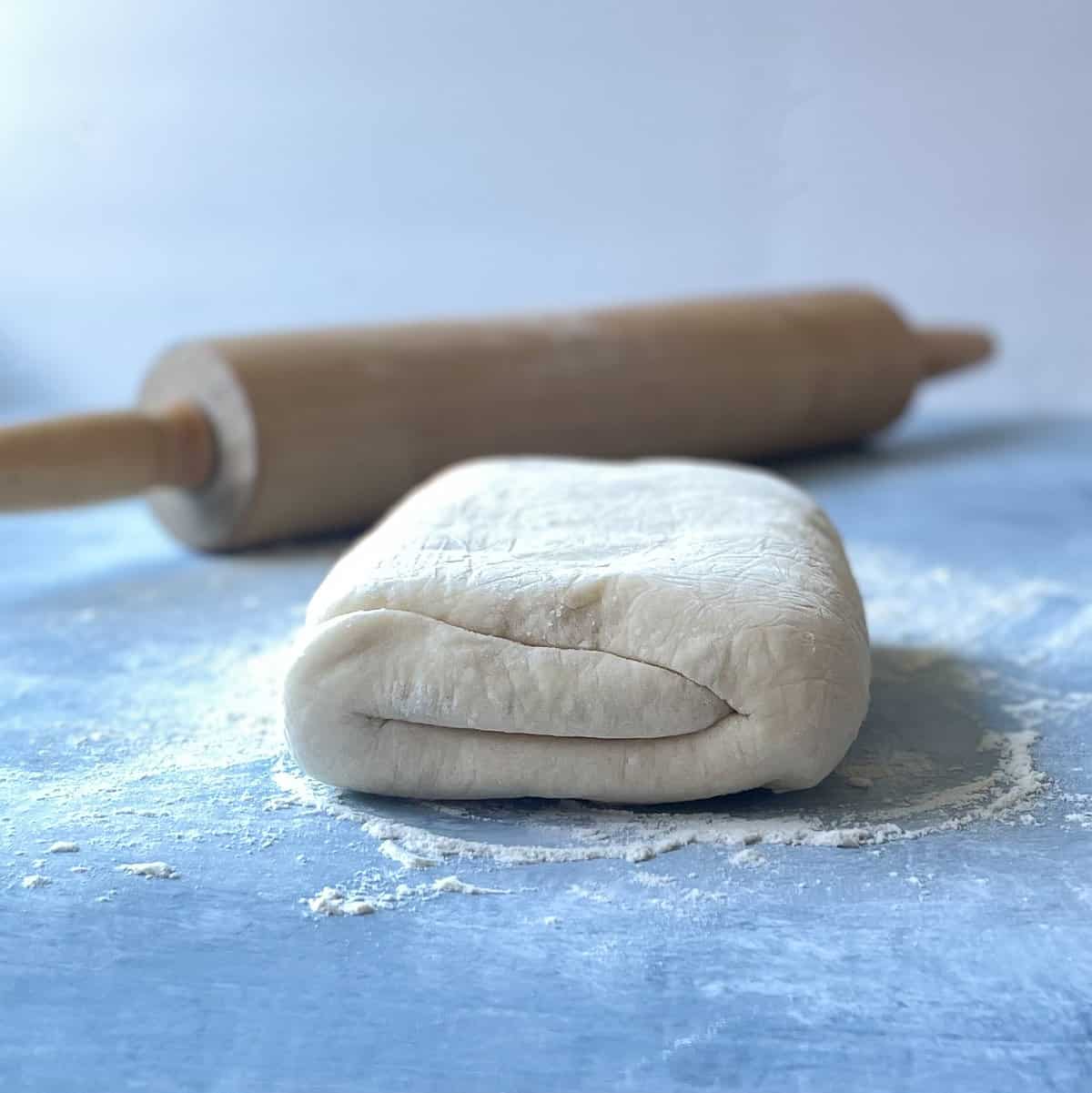
Jump to:
Ingredients
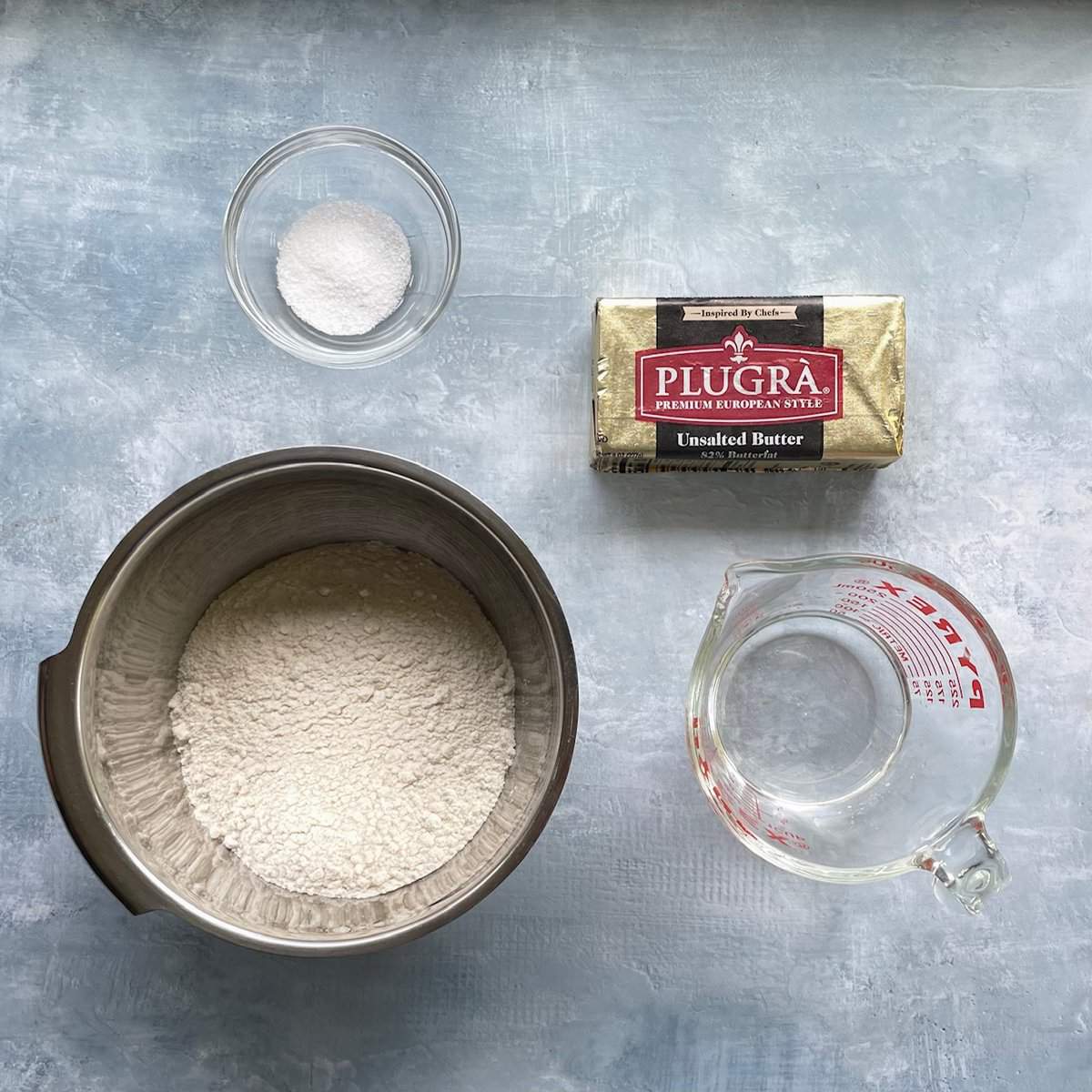
Your eyes don’t deceive you. Homemade puff pastry has four ingredients – nearly equal amounts of butter and flour, a bit of salt, and water to bring it together.
Because puff pastry is all about the butter, please use a higher fat content, European-style butter. My chocolate chip cookie taste testers preferred Tillamook extra-creamy unsalted butter or Plugra over the same cookies made with Irish butter or a standard grocery store butter. You can imagine that good butter is even more important in puff pastry!
Please see the recipe card below for complete information on ingredients and quantities.
Variations and substitutions
- If you have the time and inclination, you should make classic puff pastry at least once.
Rough puff vs full puff pastry
Classic puff pastry is made by pounding a bunch of butter into a square and wrapping it in dough. A series of folds and turns creates layers and layers of butter and dough that puff when baked. While bashing butter can be therapeutic, classic puff takes longer to make and you really have to be exceptionally careful to keep the butter cold in the lamination process.
With quick puff pastry, large chunks of butter are incorporated into flour like a pie crust. Then the dough is rolled and folded like in full puff. Rough puff won’t rise as much as classic puff pastry, but it’s soooo much easier, especially when it’s warm.
Recipe tips and tricks
My food processor is an essential kitchen tool for so many things – basil pesto, bacon jam, shrimp meatballs, chopping veggies for sauces, or cheese for mac and cheese. But the food processor is particularly suited for making for pie crust, nut pastry dough, and puff pastry. You can use a mixer or your hands, but the food processor is easiest, with similar or even better results.
Step 1: Add the flour and salt to your food processor and blitz to mix. Add the cubes of cold butter and pulse about 10 times.
Step 2: Add the water and pulse until the puff pastry dough starts to come together roughly.
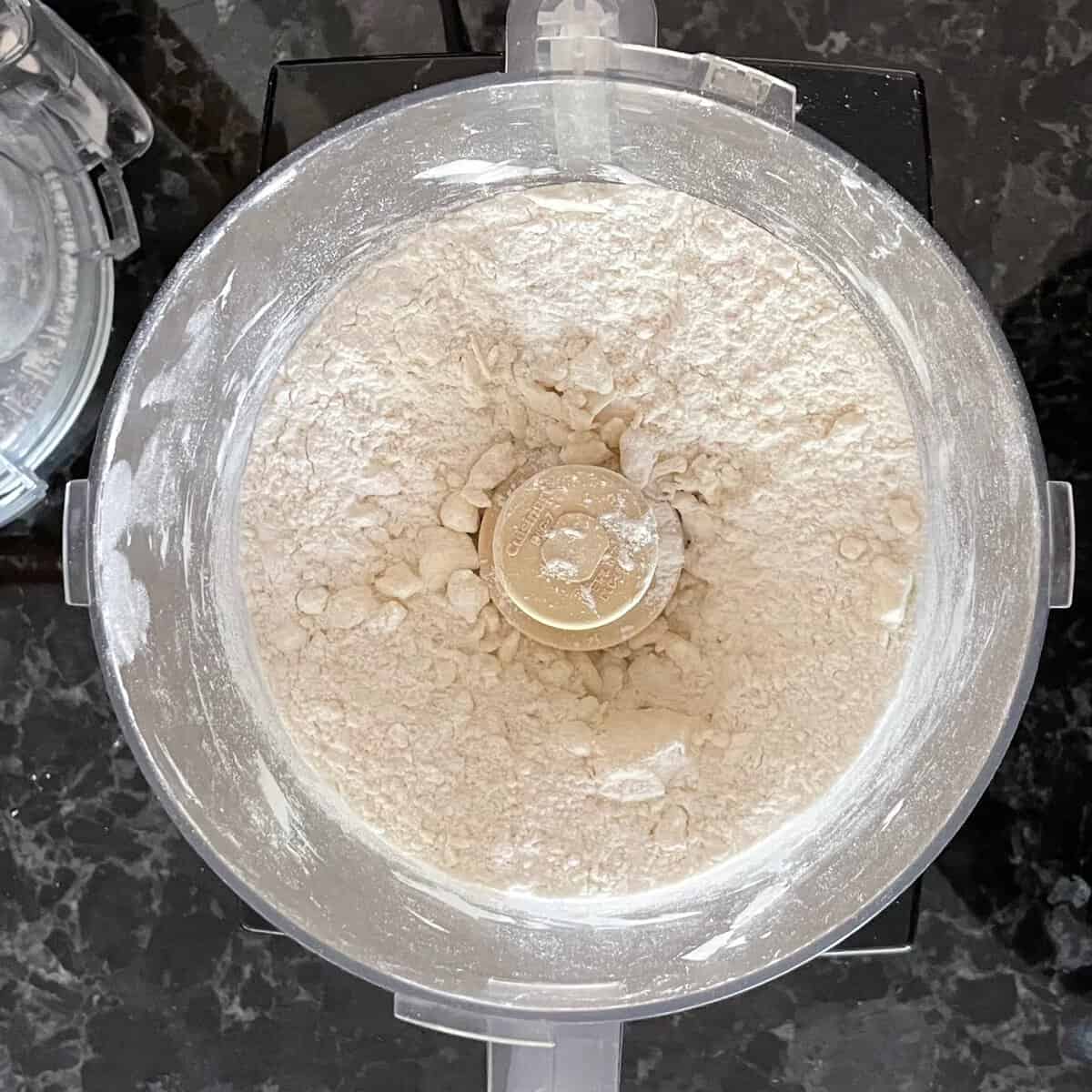
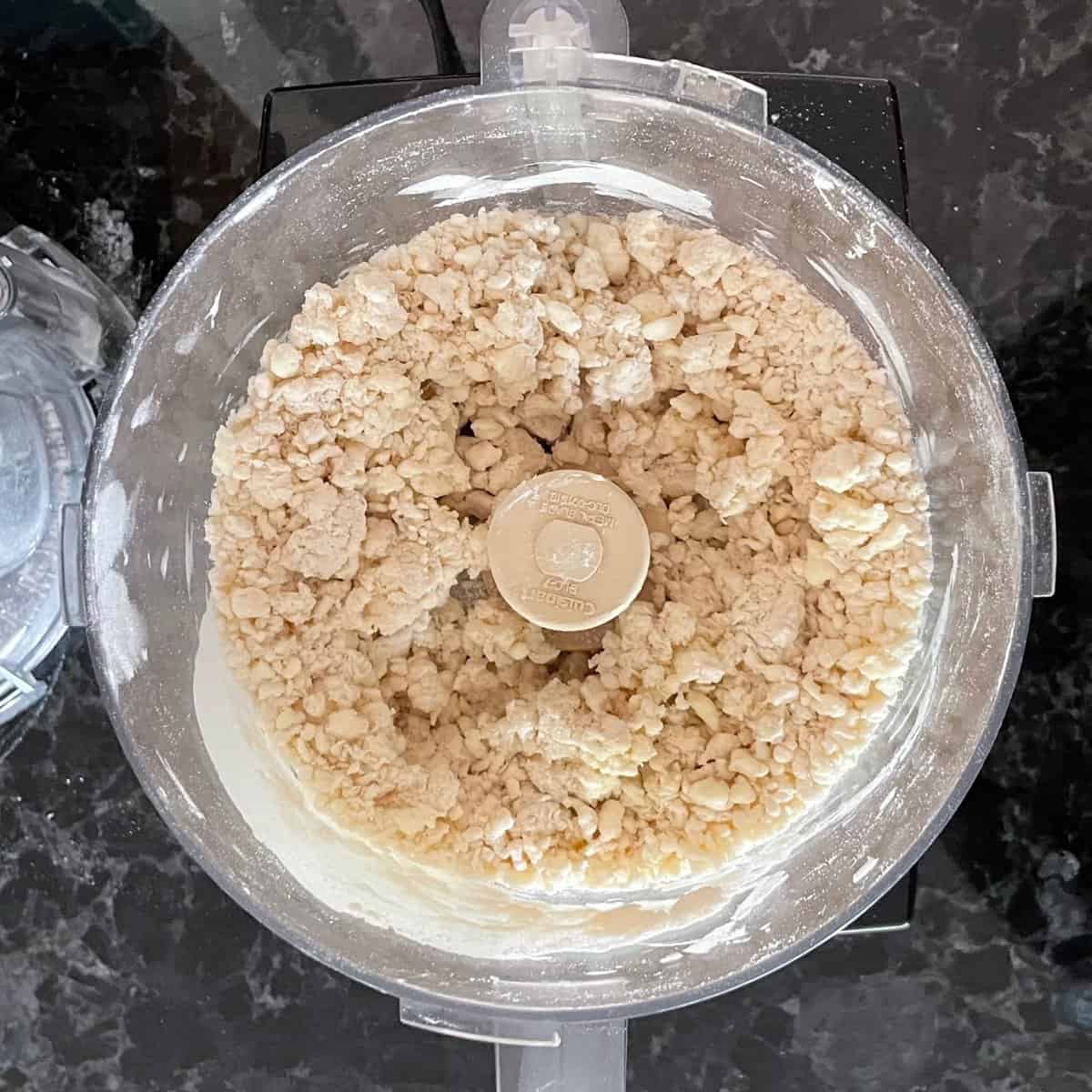
Step 3: Dump the dough bits onto a clean, floured countertop and mash them together with your hands just until the dough sticks together. Note that you can still see lots of butter bits in the dough.
Step 4: Roll out the dough to a rectangle. It doesn’t have to be any particular size, and you don’t need to worry about those shaggy edges. It will all work out.

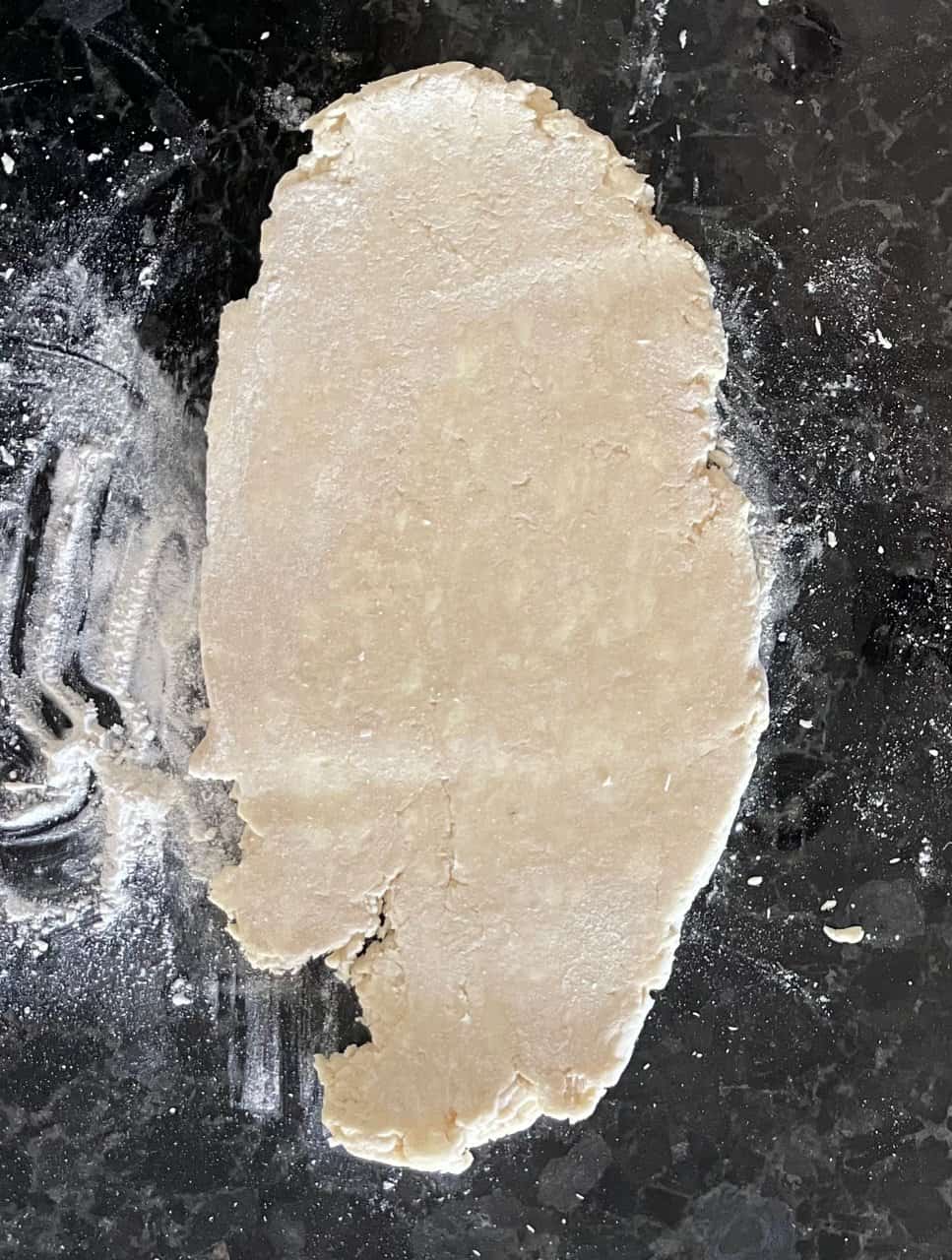
Step 5: Start your first business envelope fold by folding the top third of the puff pastry dough towards you.
Then fold up the bottom third over the top of the top third.


Tip from the wise quacker: if your puff pastry dough starts to get warm and sticky, wrap it in plastic and put it in the fridge for 15 to 30 minutes. Then resume rolling and turning.
Step 6: Rotate the puff pastry bundle one quarter turn (i.e. 90 degrees), then repeat the above steps. You’ll roll out, fold into thirds, and do a total of five turns to get 729 layers (3 to the 6th power).
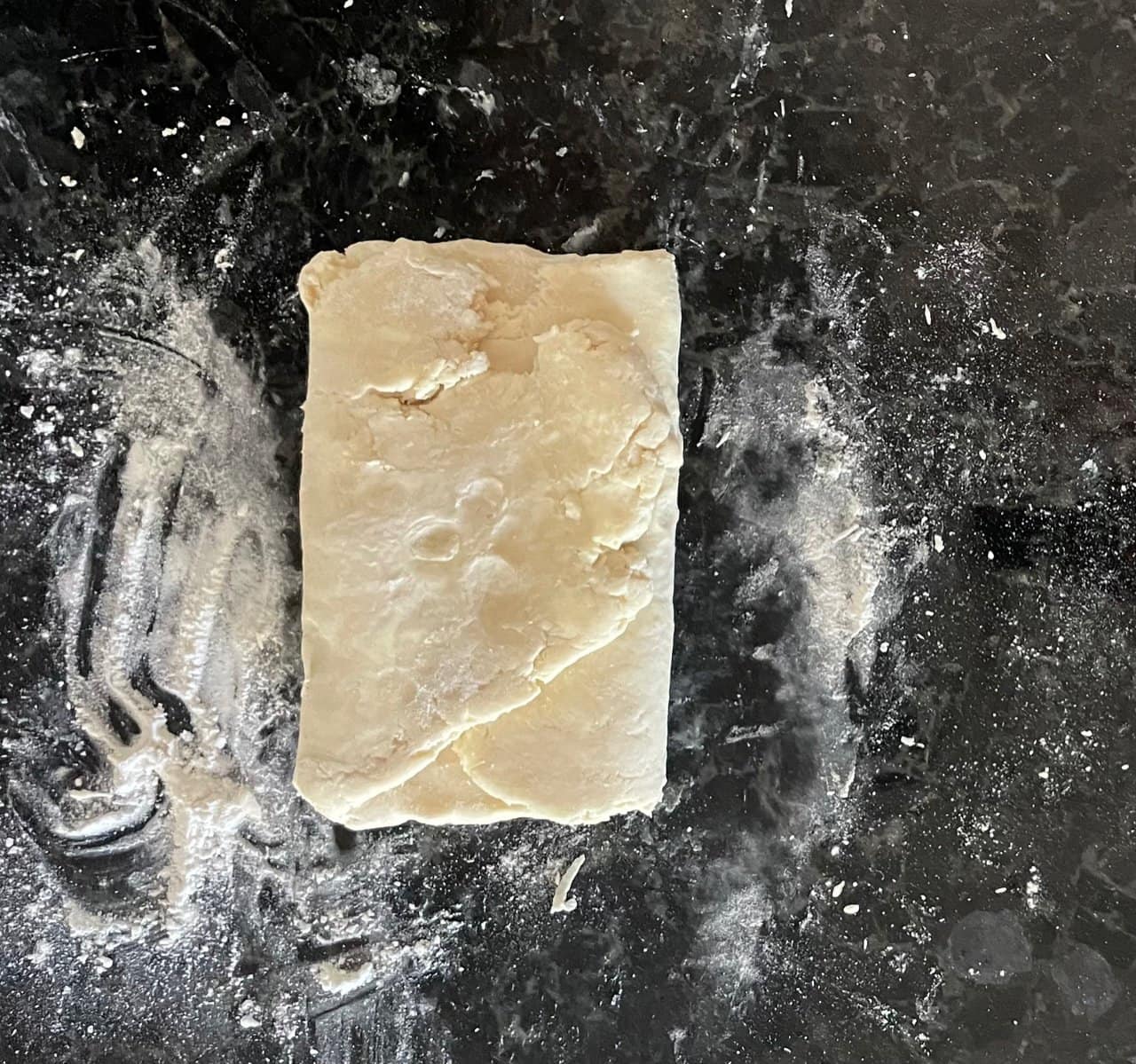

After you’ve done your turns, wrap your quick puff pastry dough in plastic wrap and refrigerate for at least an hour before using.
Uses for rough puff pastry
First of all, let’s talk about when not to use quick puff pastry. You should use a classic puff pastry dough when you’re making croissants or any puff pastry dish where you really want the thousand layers of pâte feuilletée.
Maybe not a thousand layers, but you can use this puff pastry recipe in thousands of ways, like:
- your favorite pie
- puff pastry cinnamon twists or savory puff pastry twists
- homemade sausage rolls
- fruit or vegetable tarts like the ricotta and caramelized onion tart below
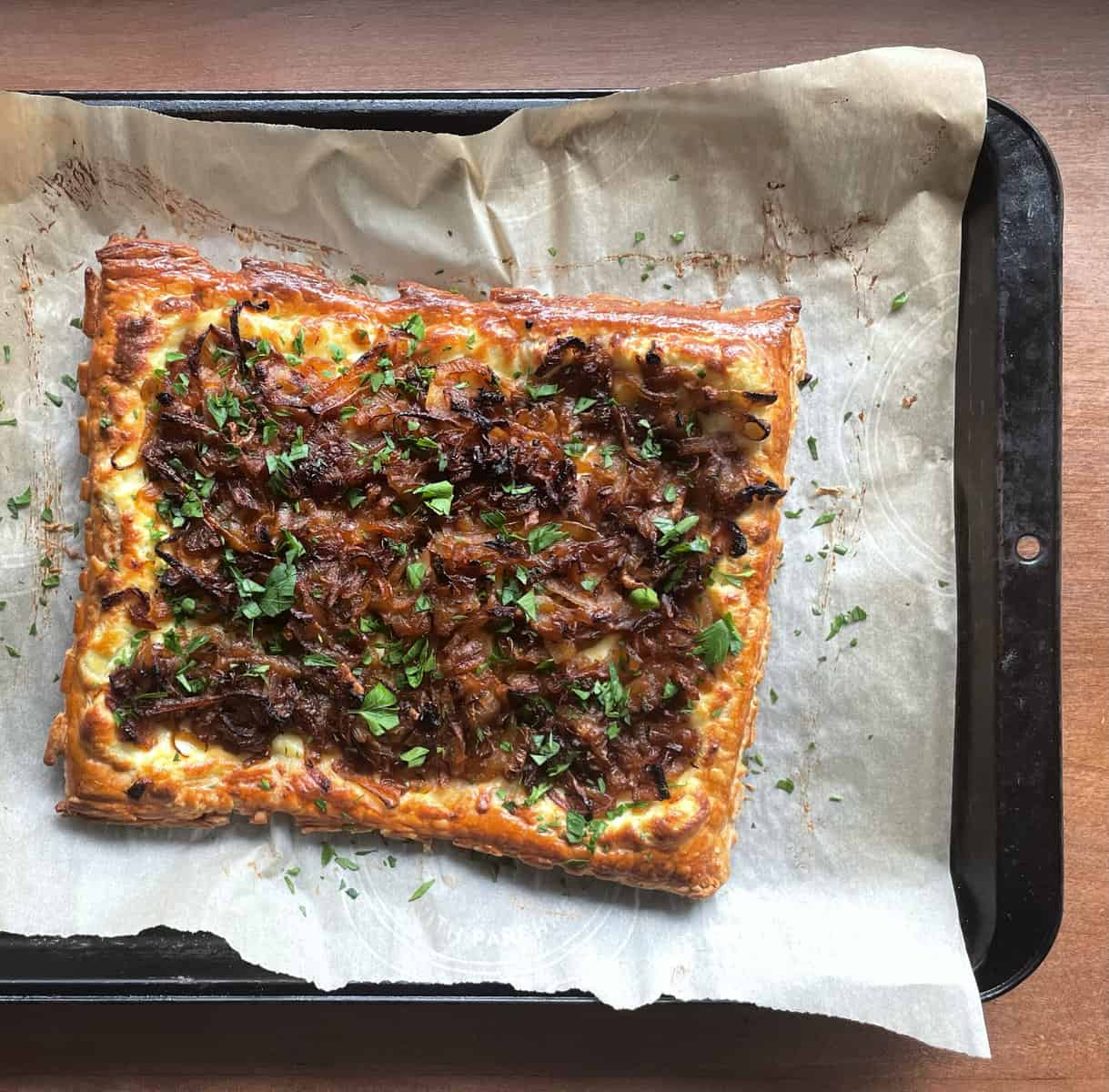
Recipe FAQs
Yes, double wrap the puff pastry dough in plastic wrap, then store it in a freezer bag for three to six months. To use, let puff pastry defrost in the refrigerator overnight.
Yes, while it isn’t a big deal if you lose count and do four or six turns, but more than that and you run the risk of losing the layers of your dough. The BBC’s Richard Burr says that seven is when your puff pastry will turn into a pumpkin, er, enriched bread.
The most common problem people have when making any kind of pastry is letting the butter get warm and the dough becomes greasy. You should also be careful about rolling your rolling pin over the edge of the pastry, which can compress the puff pastry layers.
Related pastry recipes
Check out other pie and pastry recipes from the Ugly Duckling Bakery archives like:
Love this recipe? Please leave a 5-heart 💜💜💜💜💜 rating in the recipe card below. Let me know how much you loved it, or any problems you had, in the comments section further down.
Recipe
Rough Puff Pastry
Equipment
- Food processor
Ingredients
Puff pastry (Makes about 1 pound)
- 1⅔ cup (7.1 ounce or 200 grams) all-purpose flour plus more for rolling
- ½ teaspoon salt increase to ¾ teaspoons for savory uses
- 2 sticks (16 tablespoons or 8 ounces or 227 grams) unsalted butter cold, cut into ½ inch cubes
- ⅓ cup (2.4 ounces or 68 grams) water cold
Instructions
- Add the flour and salt to the food processor and blitz until mixed.1⅔ cup (7.1 ounce or 200 grams) all-purpose flour, ½ teaspoon salt
- Add the cubes of cold butter and pulse about 10 times.2 sticks (16 tablespoons or 8 ounces or 227 grams) unsalted butter
- Add the cold water and blitz until the pastry just starts to come together.⅓ cup (2.4 ounces or 68 grams) water
- Dump the mixture out onto a clean cutting board or lightly floured countertop and mash it together with your hands just until it forms into a ball.
- Use a rolling pin to roll it into a thick rectangle with the long edges to the sides, and then fold it like a business letter. That is, fold the top third down over the middle third and then fold the bottom third up over the folded top and middle thirds. This is fold #1.
- Rotate the folded dough clockwise 90 degrees or one quarter turn. Repeat the steps above by rolling out the dough into a thick rectangle and folding it like a business letter. This is fold #2. Rotate the dough clockwise another 90 degrees.
- Repeat for fold #3 and #4.
- Wrap the rough puff pastry dough in plastic wrap and put it into the refrigerator for at least one hour before using. You can also double wrap the puff pastry in plastic wrap and place it in a small freezer bag for future puff pastry treats.
Notes
Nutrition
The recipe was adapted from the Pie and Pastry Bible by Rose Levy Beranbaum.
Bored with the recipes you’ve been cooking and baking lately? Get inspiration here:
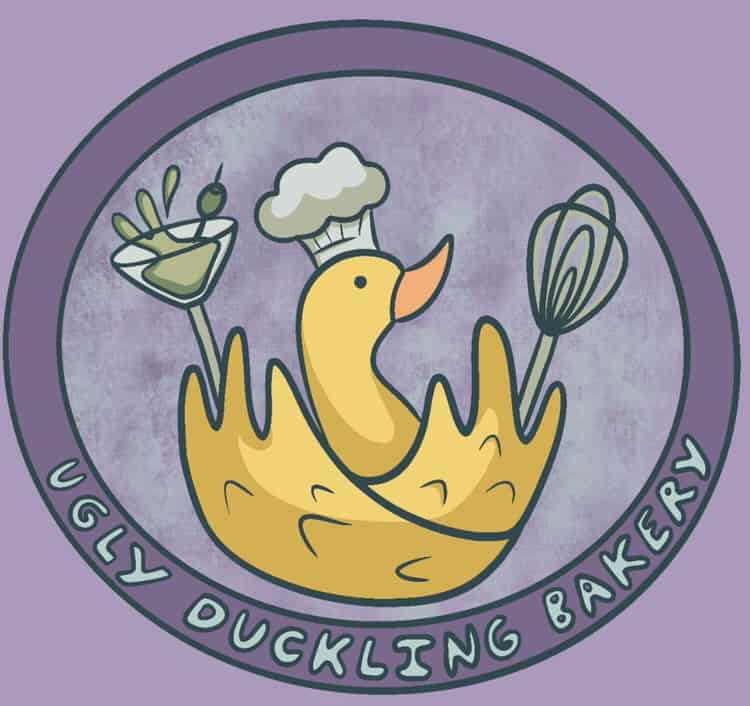
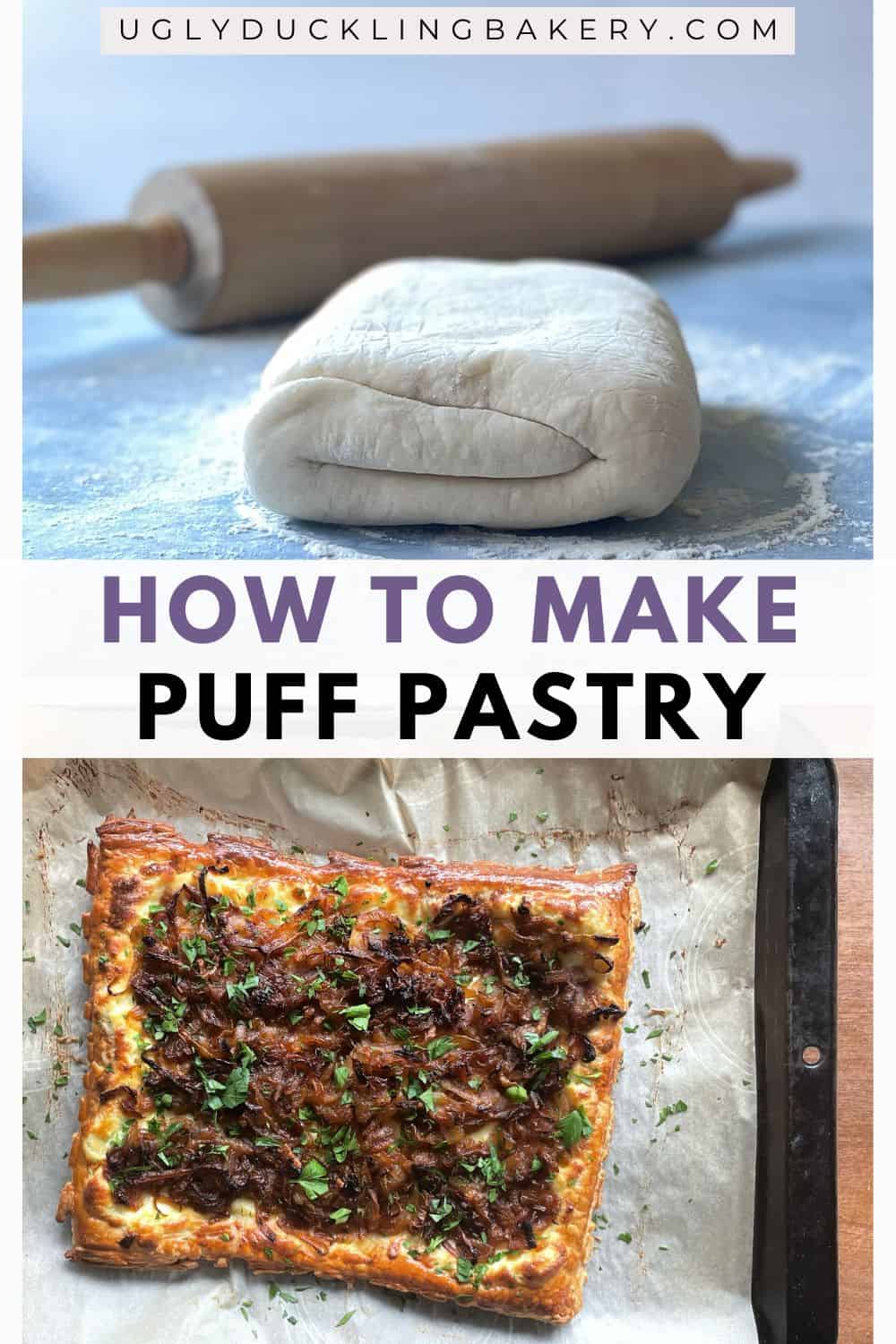
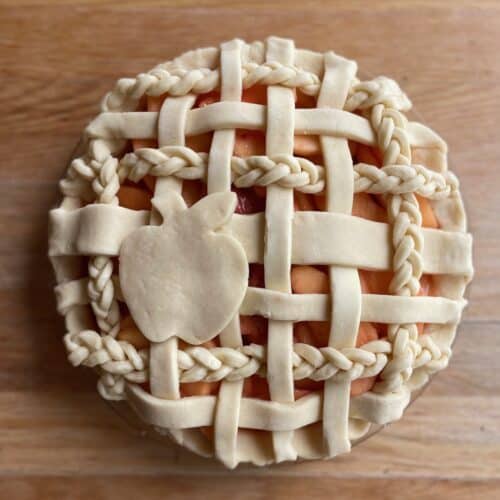
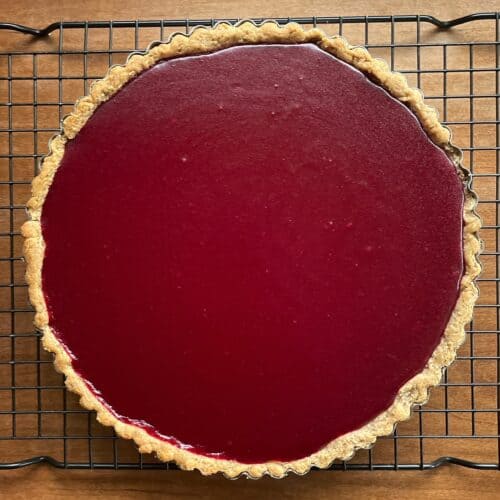
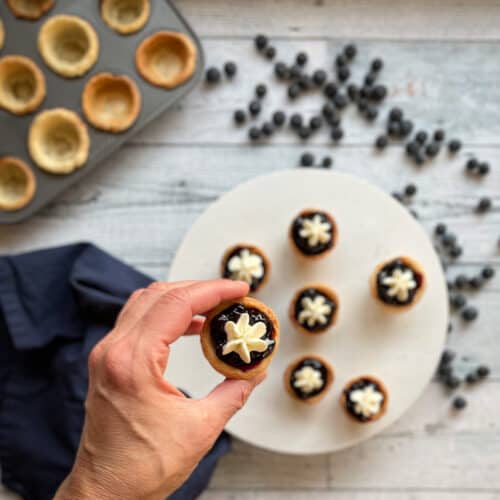
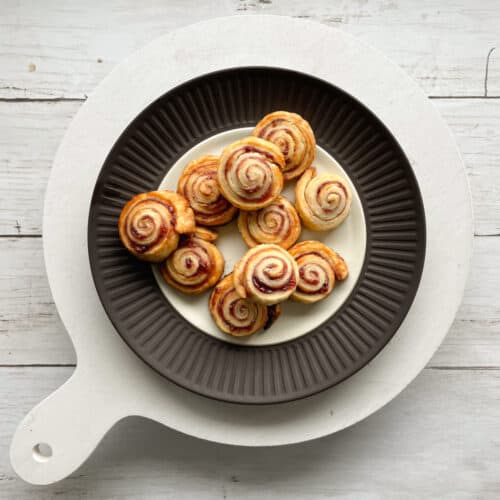

Comments
No Comments